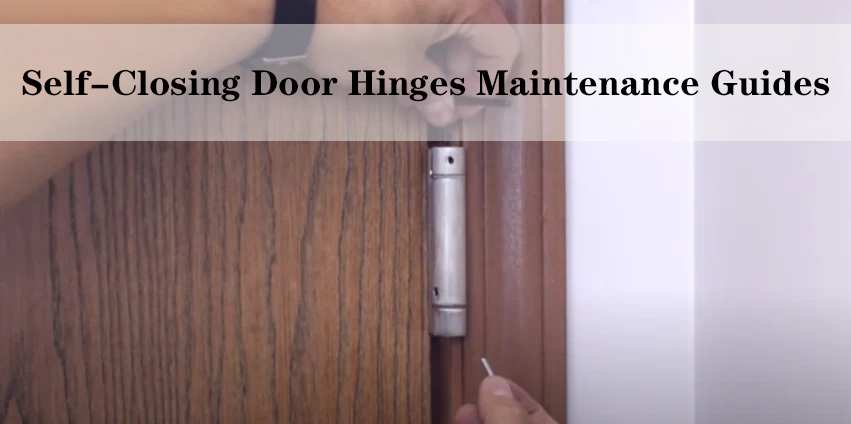When it comes to installing barn door hinges, proper installation is of utmost importance. The correct installation of barn door hinges not only ensures the smooth operation of the door but also contributes to its overall functionality and longevity. In this section, we will delve into the significance of properly installing barn door hinges and explore the benefits that come with it.
Installing barn door hinges may seem like a straightforward task, but it requires attention to detail and precision. From ensuring proper alignment to securing the hinges in place, each step plays a crucial role in guaranteeing optimal performance. By understanding the importance of correct installation, you can avoid potential issues such as sagging doors, misalignment, or even damage to the door itself. Furthermore, proper installation ensures that your barn doors function seamlessly without any unnecessary friction or resistance. This allows for easy opening and closing while minimizing wear and tear on both the hinge mechanism and the surrounding structure.
In addition to functionality, correctly installed barn door hinges also contribute to aesthetic appeal. Well-aligned hinges create a visually pleasing look by maintaining consistent gaps between the door and frame. This attention to detail adds a touch of professionalism to your space while showcasing your commitment to quality craftsmanship. So let us now explore in further detail how you can achieve this by following simple yet effective guidelines for successful barn door hinge installation.
It’s important to understand that different types of barn door hinges require different approaches. Especially if you use sliding barn door hinges, they are installed differently than standard barn door hinges, strap barn door hinges, decorative barn door hinges, heavy duty barn door hinges, wrought iron hinges or T-hinges. Follow these steps, you can get the right installation for your barn door hinges.
Installing Sliding Barn Door Hinges
Installing sliding barn door hinges, also known as barn door hardware, involves a slightly different process than traditional hinge installation due to the sliding mechanism. Here’s a step-by-step guide to help you install sliding barn door hinges:
Materials You’ll Need:
-Sliding barn door hardware kit
-Barn door
-Stud finder
-Measuring tape
-Pencil
-Level
-Screws
-Wrench
-Drill (if necessary)
Step 1: Determine Mounting Location
Use a measuring tape to determine the desired height of the sliding barn door hardware.
Use a stud finder to locate the wall studs along the intended track placement.
Mark the locations of the studs with a pencil, ensuring they align with the track holes.
Step 2: Install the Track
Hold the track against the wall, aligning it with the marked stud locations.
Use a level to make sure the track is perfectly horizontal.
Mark the screw hole locations on the track.
Pre-drill holes for the screws using a drill and an appropriate bit size.
Attach the track to the wall using the provided screws. If attaching to studs, use longer screws for secure anchoring.
Step 3: Attach the Rollers to the Door
Measure and mark the positions where the rollers will be installed on the top edge of the barn door.
Hold each roller bracket against the door and align it with the marked positions.
Pre-drill holes for the roller bracket screws.
Attach the roller brackets to the door using the provided screws.
Step 4: Hang the Door
Lift the barn door and position the rollers onto the track.
Gently slide the door back and forth along the track to ensure the rollers glide smoothly.
Adjust the roller screws if necessary to ensure the door hangs level and does not wobble.
Step 5: Install Door Stops
Measure the desired stopping points for the barn door.
Attach the door stops at both ends of the track using the provided screws.
Adjust the door stops to prevent the door from sliding off the track when fully opened or closed.
Step 6: Attach Floor Guide (if needed)
If your barn door hardware kit includes a floor guide, measure and mark its position on the floor.
Attach the floor guide using the provided screws.
Ensure the guide creates a slight gap between the door bottom and the floor to prevent friction.
Step 7: Test the Door
Slide the door back and forth along the track several times to test its movement.
Check for any obstructions or uneven sliding. Make adjustments as needed.
Step 8: Secure Remaining Hardware
Double-check all screws and bolts on the track, rollers, door stops, and floor guide.
Tighten any loose hardware to prevent instability or wobbling.

Step 9: Finishing Touches
Give the door a wipe-down to remove any fingerprints or dust accumulated during installation.
If desired, touch up the finish of the door or the track to ensure a clean and polished appearance.
Installing Other Types of Barn Door Hinges
Gather the Necessary Tools and Materials
To successfully complete your barn door installation project, it is essential to gather all the necessary tools and materials beforehand. By having everything you need at your disposal, you can ensure a smooth and efficient process from start to finish.
Barn door hinges: Select high-quality hinges that are designed specifically for barn doors. These hinges are sturdy and durable, ensuring proper support and functionality.
Screws:Choose screws that are appropriate for the weight and size of your barn door. It’s important to have enough screws to securely attach the hinges to both the door and the wall or frame.
Screwdriver:A reliable screwdriver with a comfortable grip will be needed to drive in the screws effectively. Ensure that it matches the type of screws you have chosen.
Measuring tape:Accurate measurements are crucial for proper alignment and positioning of the barn door hinges. A measuring tape will help you determine precise distances between various components during installation.
Level: To ensure that your barn door hangs straight, a level is essential. This tool will help you check if everything is aligned correctly before securing it in place.
By gathering these tools and materials before starting your project, you can save time, minimize frustration, and achieve professional results in installing your barn door hinges effectively.
Step 1: Determine the Placement and Number of Hinges Needed
When it comes to installing a barn door, determining the proper placement and number of hinges is crucial for ensuring its stability and functionality. The right hinge placement and quantity are determined by factors such as the weight and size of the door.
To begin, consider the weight of the barn door. Heavier doors require more hinges to evenly distribute the weight and prevent sagging over time. Additionally, larger doors may also require additional hinges for added support.
Next, assess the size of the door. A general rule of thumb is to have at least one hinge for every 30 inches of door height. For example, a standard 7-foot tall barn door would typically require a minimum of three hinges.
When it comes to hinge placement, evenly spacing them along the vertical length of the door is essential. The first hinge should be positioned approximately 10 inches from the top edge, while the second hinge should be placed around 10 inches from the bottom edge. If additional hinges are needed, evenly space them between these two points.
By carefully considering both the weight and size of your barn door, you can determine an appropriate number and placement of hinges that will ensure its stability and longevity. This step is crucial in creating a smoothly functioning barn door that adds both style and functionality to your space.
Step 2: Mark the Locations for Hinge Installation on the Door and Frame
To ensure a seamless installation of hinges on your barn door and frame, it is crucial to mark the precise locations beforehand. This step-by-step guide will walk you through the process, ensuring accurate placement and a professional finish.
Before marking the hinge locations, gather all the necessary tools such as a measuring tape, pencil, and level. Start by positioning your barn door on its side or against a stable surface. Take measurements to determine the desired height of your hinges from both the top and bottom edges of the door.
Next, align your door with the frame in its intended closed position. Use a level to ensure that both the door and frame are perfectly vertical or plumb. This will help prevent any alignment issues once the hinges are installed.
Now it’s time to mark the hinge locations on both the barn door and frame. Begin by placing one hinge against the edge of the door where you want it installed. Use a pencil to trace around each hinge leaf onto both sides of the door.
Repeat this process for each hinge that needs to be installed, ensuring equal spacing between them. Make sure to mark corresponding spots on both sides of your barn door for accurate alignment during installation.
Moving on to marking hinge locations on the frame, open your barn door slightly while keeping it aligned with its closed position. Hold each marked hinge leaf against its corresponding location on the frame and trace around it with a pencil.
Once you have marked all necessary spots for hinge installation on both sides of your barn door and frame, double-check their accuracy using a level or measuring tape. Adjust if needed before proceeding with attaching hinges securely in place.
By following these steps and taking precise measurements when marking hinge locations, you can ensure an efficient and successful installation process for your barn doors while achieving optimal functionality and aesthetics in your space.
Step 3: Pre-drill Screw Holes in both the Door and Frame
This crucial step that cannot be overlooked is pre-drilling screw holes in both the door and frame. This step ensures that the screws fit securely and prevent any potential damage to the wood.
To begin, gather all the necessary tools, including an appropriate drill bit size. It’s essential to choose a drill bit that matches the size of your screws to ensure a proper fit. Using an undersized or oversized drill bit can lead to loose or stripped screws, compromising the stability of your barn door.
With the correct drill bit in hand, carefully mark the desired locations for your screw holes on both the door and frame. Take into consideration any hardware or brackets that need to be attached as well.
Next, firmly hold the drill perpendicular to the surface and apply steady pressure as you begin drilling into each marked location. Ensure that you are drilling straight and not at an angle to avoid misaligned holes.
Take care not to drill too deep; aim for a depth slightly shorter than the length of your screws. This will allow for better grip and prevent any damage from overdriving.
Once all holes have been drilled in both the door and frame, you are ready for the next step in installing your barn door. Pre-drilling screw holes may seem like a small detail, but it plays a significant role in ensuring a secure and long-lasting installation.
By taking this extra step with precision and using appropriate drill bit sizes, you can confidently move forward with attaching your barn door hardware knowing that it is securely fastened in place.
Step 4: Attach the Hinge Plates to the Door and Frame

In this crucial step, we will guide you through attaching the hinge plates to both the door and the frame of your barn door. This process ensures a secure and sturdy installation that will withstand daily use.
To begin, gather your hinge plates, screws, and a screwdriver. Place the first hinge plate on the designated area of the door where you want it to be installed. Align it carefully to ensure proper positioning.
Next, take your screws and insert them through the holes on the hinge plate into the door. Make sure to use screws that are appropriate in length for your specific door thickness. Tighten them firmly but avoid over-tightening to prevent damaging the wood.
Moving on to securing the hinge plates onto the frame, align each plate with its corresponding position on the frame. Ensure that they are level and properly aligned with each other for smooth operation of your barn door.
Using your screwdriver again, insert screws through each hole in the hinge plates into their respective positions on the frame. As before, tighten them securely without applying excessive force.
Repeat this process for all remaining hinge plates until they are all securely attached to both the door and frame.
By following these steps carefully and using appropriate screws, you can confidently attach your hinge plates to both your barn door and frame with ease. This ensures a reliable installation that will keep your barn door functioning smoothly for years to come.
Step 5: Check for Proper Alignment and Adjust if Necessary
In the final step of installing barn door hinges, it is crucial to ensure proper alignment for a smooth and functional operation. By following this step, you can guarantee that your barn door will not only look visually appealing but also function correctly.
To begin, carefully examine the placement of the hinges on both the door and the door frame. Use a level or measuring tape to check for any inconsistencies or misalignments. It’s essential to make sure that all hinges are parallel and evenly spaced.
If you notice any deviations from proper alignment, it’s time to make adjustments. This can be done by loosening the screws on the hinges slightly, allowing for movement. Gently shift the position of the hinge until it aligns with your desired specifications.
Once you have made necessary adjustments, re-tighten the screws firmly but avoid over-tightening as this may cause damage to the wood or compromise stability.
By taking these steps to check for proper alignment and adjusting if necessary, you can ensure that your barn door hinges are installed correctly and will provide years of reliable use.
Step 6: Tighten Screws Securely
Tightening the screws securely is a crucial step. By properly fastening the screws, you can ensure that the hinges are firmly in place, preventing any potential movement or loosening over time.
To begin, gather your tools including a screwdriver or drill with an appropriate bit size for the screws. Position yourself in front of the hinges and inspect each screw to ensure they are properly aligned with their respective holes.
Using firm and controlled pressure, insert the screwdriver or drill bit into each screw head and begin tightening clockwise. Be careful not to overtighten as this could strip the threads or damage the wood surrounding the hinge.
As you tighten each screw, pay close attention to any resistance or wobbling. If you encounter any resistance, stop immediately and assess whether there are any obstructions preventing proper alignment. In such cases, remove the screw and address any issues before attempting to tighten again.
Notes: Properly tightening screws on barn door hinges is crucial for ensuring the stability and durability of the door. By following step 7, you can ensure that the screws are securely fastened, preventing any potential issues in the future.
Make sure to follow the manufacturer’s instructions specific to your barn door hinges.
It is recommended to have someone assist you during the installation process for easier handling of the door.
Conclusion: Enjoy a Smoothly Functioning Barn Door with Properly Installed Hinges
In conclusion, the proper installation of barn door hinges is crucial for ensuring a smoothly functioning barn door. By paying attention to this important detail, you can enjoy a myriad of benefits.
Firstly, properly installed hinges guarantee a smooth operation of your barn door. They allow the door to glide effortlessly along its track, eliminating any frustrating hitches or jams that may occur with poorly installed hinges. This ensures a seamless and hassle-free experience every time you open or close your barn door.
Additionally, the longevity of your barn door is greatly enhanced when hinges are correctly installed. Properly aligned and securely fastened hinges prevent unnecessary wear and tear on the door and its components. This means that your barn door will not only function smoothly in the short term but also maintain its performance over time.
Furthermore, safety is another significant advantage of properly installed hinges. When hinges are secure and aligned correctly, there is reduced risk of accidents or injuries caused by loose or misaligned doors. This is particularly important in high-traffic areas such as barns where people and animals may be passing through frequently.
In summary, investing time and effort into ensuring that your barn door hinges are properly installed will provide you with numerous benefits. From enjoying a smooth operation to prolonging the lifespan of your door and enhancing safety measures, proper hinge installation is essential for an optimal barn door experience. So don’t overlook this important aspect when it comes to installing or maintaining your barn doors!

























